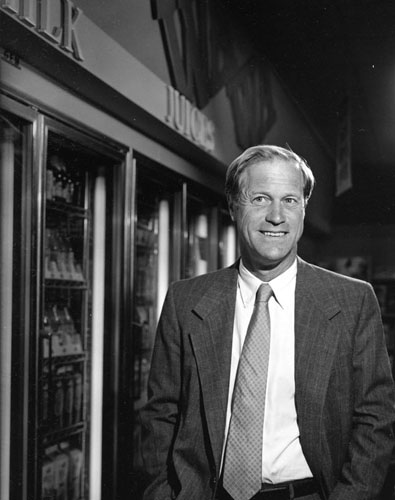On June 17, the first Wawa Food Market in Folsom, Pennsylvania closed its doors after 52 years. The local media mourned its passing but just one week later, Wawa opened a new “super store” only a short distance away. As my last article about Wawa showed, renewal is a key factor in the company’s success. It’s rooted in a tradition of family ownership and a commitment to re-invention. Starting in 1803, the Wood family businesses evolved from iron and textile production to dairy farming and convenience stores. In today’s world, consumers choose Wawa because their stores offer quality products, fast service and excellent value.

The Wawa Folsom, Pa. store, Hagley Digital Archive.
However, there are two other important elements driving their success which are less obvious to customers: private ownership shared with employees and a culture that motivates them. As Howard Stoeckel, past CEO and author of The Wawa Way: How a Funny Name and 6 Core Values Revolutionized Convenience: “Private ownership is deeply embedded in our mentality and always been part of the Wawa DNA. It gives fuel, life and breath to our culture. That culture… would be very, very different today if we were a Wall Street company.” Although the concept of a family held company remaining private seems easy enough, it’s very difficult to maintain over the course of 200 years. Case studies have shown that the vision and goals of those who start family businesses tend to give way by the third family generation to the desire for more wealth, the need for more capital, or lack of interest. One reference in the Harvard Business Review[1] states that: “Some 70% of family-owned businesses fail or are sold before the second generation gets a chance to take over. Just 10% remain active, privately held companies for the third generation to lead.”
In Wawa’s case, they had successfully navigated past the third generation challenges only to encounter them one hundred years later. A complicated pair of trusts created by the Wood family in the 1920s became a point of contention in the 1980s and 1990s. Both trusts shared the same oversight trustees, the most active of which was Fidelity Bank. Not surprisingly, the trusts created tensions between the two family groups, which together owned 66% of the company. Ironically, the better Wawa did financially, the more concerned Fidelity became about the need for diversifying the trusts. Outside investment advisors to the trustees also pushed hard for either a sale of the company or diversification of the trusts through an initial public stock offering (IPO). In 1996, trust lawyers formally recommended the same and asked that a list of ten potential buyers be developed.

In July 2003, the plan almost came to reality as two investment banks met with several members of Wawa’s management team to assist with an IPO. However, through the leadership and resolve of Wawa’s president, Dick Wood, the plan was scuttled at the meeting to the shock of the Wall Street bankers. Wood later recalled: “I felt like a skunk at a picnic.” A key factor on his side was a major retraction of U.S. stock markets in the preceding months which had reduced the potential value of Wawa’s IPO by nearly a third. That was the closest Wawa had come to public ownership.
Hoping to avoid a similar confrontation in the future, Dick Wood undertook negotiations to acquire the external shares from Fidelity Bank and solidify the company’s private ownership. The cost would be $141 million. In December 2003, Wood, Stoeckel and Thére duPont, Wawa’s Chief Financial Officer, announced plans to substantially increase the amount of company stock available to employees in order to help finance the purchase. Up to that point, the Employee Stock Ownership Program (ESOP), formed in 1993, held about 8% of Wawa.
By March 2004, 70 percent of the employees opted into the new ownership program by deciding to shift a portion of their 401K savings and profit sharing plans into the ESOP. Those personal commitments helped the company to fund a significant part of the stock managed by Fidelity. In fact, employees had such a strong belief in Wawa’s future growth that they over-subscribed to the offer and raised $59 million for the privatization. In 2014, when Wawa Food Markets turned 50, the employees owned 39% of the company.
Since Wawa is private, it doesn’t disclose financial results nor are they part of the material on deposit at Hagley. However, a number of studies compiled by the National Center for Employee Ownership (NCEO) have shown that employee owned companies consistently do better financially, whether measured by sales growth, earnings, or jobs created: http://www.nceo.org/articles/studies-employee-ownership-corporate-performance
For more information on how Wawa’s stock ownership program works for its employees, refer to Howard Stoeckel’s book which is in Hagley’s library. In a future newsletter, Wawa’s corporate culture and their six core values will be highlighted.
[1]Stalk Jr., George and Foley, Henry. "Avoid the Traps That Can Destroy Family Businesses." Harvard Business Review. January-February 2012.
Gene Castellano is the Business Manager for Hagley Heritage Curators
